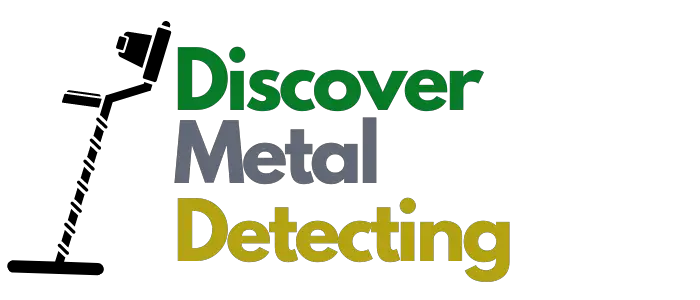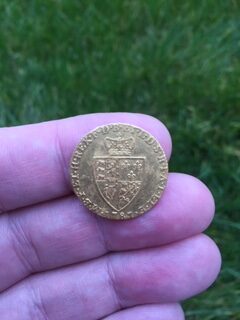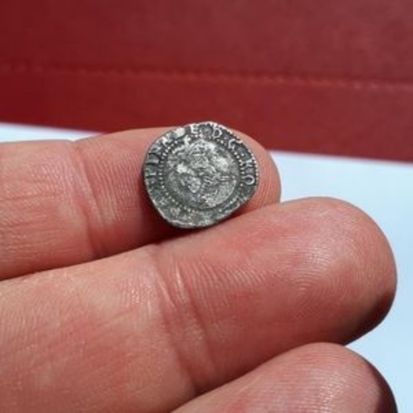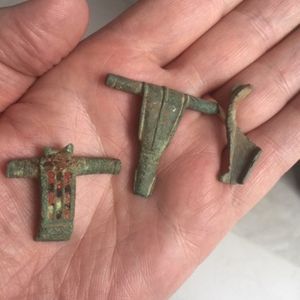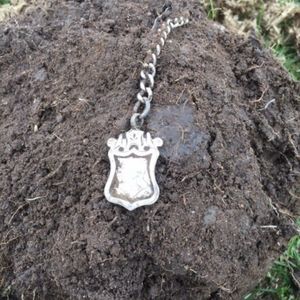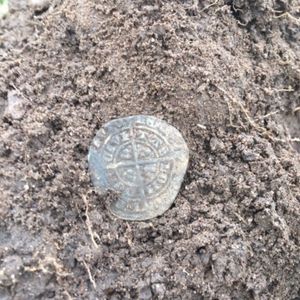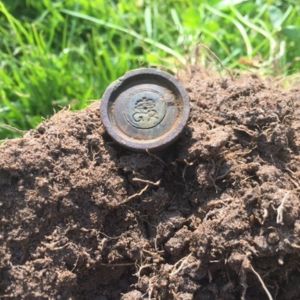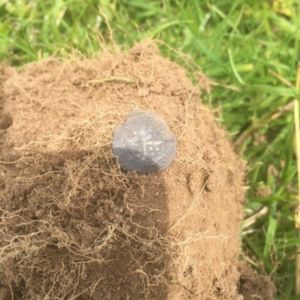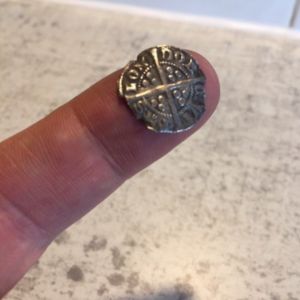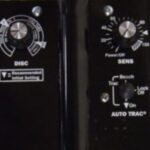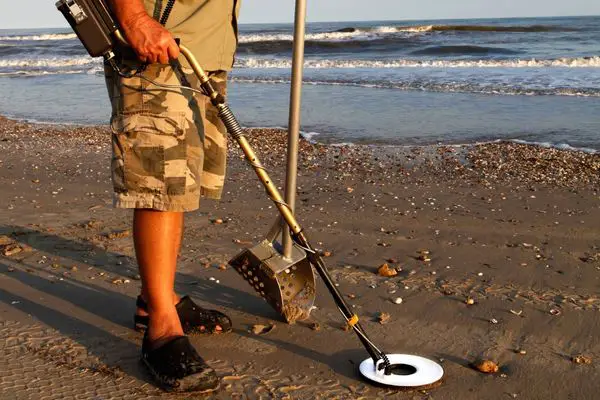Understanding target ID’s and their importance
One of the most valuable features of modern metal detectors is the ability to identify potential targets before digging them up. This is made possible through graphical target ID’s.
These are numerical values that are displayed on the detector’s screen or control box. They may also be accompanied by a pictorial icon, a flashing pixel block on a scale or a pattern on a target trace.
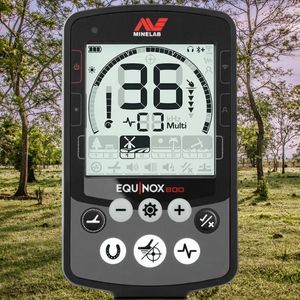
Correctly interpreting all of these target ID’s can save you time and effort helping you decide whether an object is worth excavating or leaving behind.
But how exactly do you read these target ID’s? What do the numbers mean and how accurate are they?
This comprehensive guide will help you decipher the information and make the most of the detector’s target identification capabilities.
Read my article on metal detecting for beginners here!
Factors affecting target ID accuracy
While target ID’s can provide useful information about potential finds, it’s essential to understand that their accuracy can be influenced by several factors.
Target composition and shape
The target ID displayed by your metal detector is primarily determined by the buried object’s metallic composition and shape. For example, a solid silver coin will produce a different target ID than a hollow gold ring or an irregularly shaped piece of scrap metal.
Detectors use advanced algorithms to analyse the conductivity and other properties of a target but these calculations can sometimes be skewed by unusual shapes or mixed compositions.
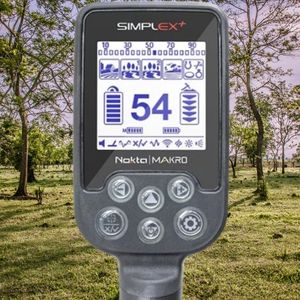
Another factor to consider is that some newer generation metal detectors use “multi-frequency” technology instead of “single frequency” which greatly improves target ID accuracy, especially at greater depths.
The subject of how certain frequencies work is too big for the scope of this article but you can read my more in depth article about how multi frequency detectors work here.
This latest technology when launched made any metal detector that used it hugely expensive. This latest breakthrough technology can now be had for entry level money, typically in the Minelab Vanquish range.
You can read my in depth article on the multi frequency Minelab Vanquish range here.

Unbeatable Multi Frequency!
You can now get the ultimate power of multi frequency technology over single frequency detectors with the Minelab Vanquish range of detectors.
The entry level Vanquish 340 now gives you ultimate depth, stability and sensitivity on all target types in every soil, including wet beach sand.
Soil conditions and mineralization
The nature of the soil in which a target is buried can also impact the accuracy of a target ID. Highly mineralised or saline soils can interfere with the detector’s ability to correctly identify targets, often causing ID drift or fluctuations.
Similarly, moist or densely packed soil can affect the electromagnetic signals used for target analysis, leading to potential misidentifications.
This is typically where multi frequency technology works better than single frequency technology. Multi frequency technology gathers more information making the identification more accurate and stable.
Depth and orientation of the target
The deeper a target is buried, the more challenging it becomes for the metal detector to accurately pinpoint its properties and generate a precise ID.
Additionally, the orientation of the target relative to the detector’s coil can influence the readings, as certain angles may cause the signals to be distorted or weakened.
For example, a coin laying flat in the ground will present a larger surface area than if it were laying vertically presenting only its edge to the detector.
Interpreting common target ID ranges
While specific target ID numbers can vary across different detector models and manufacturers, there are some general ranges that are commonly used to identify various types of targets.
Ferrous (Iron) targets
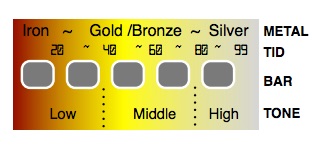
Ferrous targets, such as nails, bolts and other iron based objects, typically register low target ID’s, often in the range of 0 to 35 depending on the detector.
These items are usually considered undesirable finds for most metal detectorists, as they have little to no value and can be easily identified and avoided.
Read my more in depth article on how to identify iron here.
Non ferrous targets: Precious metals and coins
More sought after targets like silver and copper often produce target ID’s in the upper ranges, typically between 70 and 99, again, depending on the detector.
These numbers indicate the presence of highly conductive, non ferrous metals which are more sought after by treasure hunters and coin shooters.
Gold coins and rings can fall much lower on the conductive scale towards the mid range depending on size.
Non Ferrous targets: Aluminium and lead
Lead targets tend to fall in the mid range of target ID’s, usually between 40 and 70. While not as valuable as precious metals, these items can still be of interest to some detectorists, especially when hunting for relics or other historical artifacts.
Aluminium is a tricky one for detectorists as it’s highly conductive and often shows in the higher ranges along with copper and larger silver coins.
It’s important to note that these ranges are approximate and can overlap or shift depending on the specific detector model and settings.
Additionally, some detectors offer more advanced target identification features such as the ability to differentiate between different non ferrous metals or to identify specific coin denominations.
You can read my more in depth article on metal detector discrimination and metal conductivity here.
Mastering target ID interpretation
While target ID’s can provide valuable guidance, mastering their interpretation takes practice and experience, especially when some targets may be made from two different metals!
A target may also fall right inbetween two target zones or “tone breaks” giving you a mixed audio sound of two tones. You may think the detector is going mad but it may only be telling you what it’s seeing!
The metal detector I am currently using is a Minelab Manticore after using a Minelab Equinox 800 for several years. The game changing feature on the Minelab Manticore is the “Target Trace” system.
This displays a target pattern of what it sees in the ground. This often displays that there is more than one target presenting itself….it’s incredible!
Find the lowest priced Minelab Manticore on Amazon here.

Here are some tips to help you become proficient in reading and understanding these numerical codes:
Familiarise yourself with your detector’s manual
Start by thoroughly reading your metal detector’s user manual or instruction guide. This will provide you with the specific target ID ranges and interpretations used by your particular model.
It will also explain any further model specific specialised features or settings related to target identification.
Practice with known targets
This is one of the best ways to improve your target ID reading skills through hands on practice. Bury various items (coins, jewelery, scrap metal, etc.) in your garden or a designated test area and use your detector to analyse and identify them.
This will help you develop an intuitive understanding of how different targets register on your device. These targets can be obtained over time whe you first start going out.
At first, try to listen and remember target numbers but dig everything until you become more skilled. You can then use any good finds like differing coin types, buckles and buttons.
Try them lying flat, on edge and also on an angle to get a full idea of how numbers and tones can change.
Use target ID in combination with other indicators
While target ID’s are valuable, they should not be relied upon as the sole indicator of a potential find. Always consider other factors, such as the depth reading, signal strength and audio tones.
This will help to gain a more comprehensive understanding of what you’ve detected. Does the signal repeat everytime you sweep over it? Do the numbers remain stable? Do you get a high tone signal in one direction but a low tone at 90 degrees?….(typically iron!)
Is the audio tone clean and crisp or is it “scratchy”? Are the numbers erratic and failing to lock on? These are all things to master.
Adjust settings and discrimination levels
Most metal detectors allow you to adjust discrimination levels and other settings to filter out or prioritise certain target ID ranges.
Experiment with these features to find the optimal configuration for your specific hunting goals, whether you’re seeking coins, relics or other types of targets.
By mastering the art of reading and interpreting target IDs, you’ll be able to make more informed decisions in the field, maximize your chances of finding valuable treasures, and minimise the time and effort spent digging up unwanted objects.
Happy hunting!
